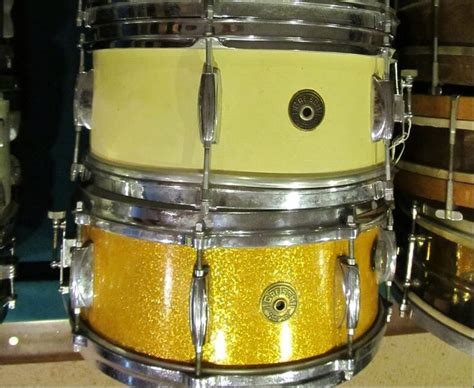The Ultimate Guide to Vintage Drum Dating
Dating vintage drums can be a thrilling detective game, blending history, music, and a bit of sleuthing. Whether you're a seasoned collector or a curious enthusiast, knowing how to accurately date your vintage drums is crucial for understanding their value, history, and place in drumming history. This guide will equip you with the knowledge and techniques to effectively date your vintage drum kit.
Why is Dating Vintage Drums Important?
Accurately dating your vintage drums is paramount for several reasons:
- Determining Value: The age and condition of a drum significantly impact its market value. A rare, well-preserved kit from the golden age of drumming will command a much higher price than a more common, later model.
- Understanding History: Dating a drum reveals its place in the evolution of drum manufacturing, design, and musical trends. This provides context and deepens your appreciation for the instrument's history.
- Authenticity Verification: Dating can help verify the authenticity of a drum, particularly if you suspect it might be a counterfeit or a later reproduction.
- Restoration & Repair: Knowing the age of your drums can inform restoration choices, as different materials and construction techniques require specialized care.
Key Techniques for Dating Vintage Drums
Several methods can be used to date vintage drums, often in combination for greater accuracy:
1. Examining the Drum's Hardware
Hardware provides significant clues:
- Badge/Logo: The logo itself can be a strong indicator. Research the evolution of the manufacturer's logos. Did they change fonts, designs, or placements over the years? This can narrow down the possible manufacturing dates.
- Lug/Tension Rod Style: The design and material of the lugs (the metal pieces that hold the drum heads) have evolved over time. Older drums might have simpler, less refined lugs than later models. Changes in material (e.g., the shift from steel to brass) also provide valuable clues.
- Mounting System: The way the drums are mounted (e.g., classic spurs vs. more modern mounting systems) can indicate age.
- Shell Material: Identifying the shell's material (maple, birch, beech, etc.) can provide clues. Some woods were more prevalent in specific eras.
2. Analyzing the Shell Construction
- Reinforcement Rings: The presence, absence, or style of reinforcement rings can indicate the manufacturing date.
- Shell Thickness: Some manufacturers used different shell thicknesses in different eras.
- Construction Technique: The methods used to construct the drum shell can be age-indicative (e.g., seam placement, methods of finishing the shell edges).
3. Deciphering Serial Numbers (if present)
Many drum manufacturers used serial numbers to track production. This is often the most reliable method for accurate dating. However:
- Access to Manufacturer Records: Finding accurate records of serial numbers and their corresponding dates can be challenging; some manufacturers' archives are incomplete or inaccessible.
- Variability in Serial Number Systems: Not all manufacturers used consistent serial numbering systems throughout their history.
4. Considering the Drum's Overall Condition
The drum's overall condition can provide contextual clues.
- Wear and Tear: The level of wear and tear can offer hints about age. However, this is not a precise method as it depends heavily on the drum's use and care.
- Finish: The type of finish (lacquer, wrap, etc.) and its condition can provide clues. Certain finishes were popular in certain eras.
H2: Where Can I Find More Information About Dating Specific Drum Brands?
Many online forums and communities dedicated to vintage drums provide extensive resources and databases for researching specific brands. Members often share their knowledge and expertise, aiding in the dating process.
H2: Are there any books or resources specifically focused on vintage drum dating?
Yes, several books delve into the history of drum manufacturing and offer guidance on dating specific brands. These books often include detailed photographs and charts to aid in identification. Check your local library or online bookstores for resources on vintage drums and drum collecting.
H2: What if I can't find any identifying marks on my drums?
If your drums lack clear markings, dating becomes more challenging. In such cases, relying on visual inspection of the hardware, shell construction, and overall condition becomes crucial. Consulting with experienced vintage drum collectors or appraisers may provide additional insights.
Conclusion:
Dating vintage drums requires a combination of careful observation, research, and knowledge of drum manufacturing history. While there’s no foolproof method to date every drum precisely, using the techniques outlined above will significantly improve your accuracy and allow you to enjoy the rich history embedded in your vintage instrument. Remember, patience and thorough research are key to uncovering the secrets of your vintage drums.

